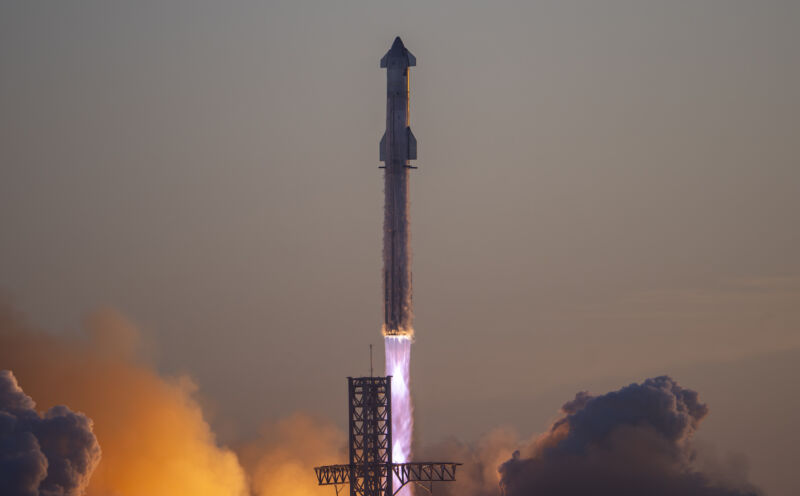Starship brought the thunder as it climbed into space for the first time

Enlarge / SpaceX's Starship rocket took off from South Texas at 7:03 am CST (13:03 UTC) Saturday. (credit: SpaceX)
BOCA CHICA BEACH, Texas—SpaceX's Starship mega-rocket reached space for the first time Saturday, flying straight and true for more than eight minutes before exploding nearly 100 miles over the Gulf of Mexico downrange from the company's South Texas launch base.
With this test flight, SpaceX made important steps forward with Starship, the largest rocket ever built. This is the fully reusable launch vehicle Elon Musk, SpaceX's founder and CEO, says is crucial to his vision of establishing a settlement on Mars. In the nearer term, once Starship is flight proven, SpaceX plans to use the rocket to launch massive payloads of numerous Starlink Internet satellites. NASA has a pair of contracts with SpaceX worth more than $4 billion to use a variant of Starship to land astronauts on the Moon. Private space travelers have also signed up to fly on Starship.
But those ambitions hinge on getting Starship into orbit, which hasn't happened yet. The flight profile for Saturday's test launch, designated Orbital Flight Test-2 (OFT-2), should have taken the unpiloted Starship on a trajectory to fly most of the way around the world before a targeted reentry and splashdown in the Pacific Ocean near Hawaii. In the end, the rocket didn't reach this objective, but the results Saturday were promising.
Comments
Post a Comment